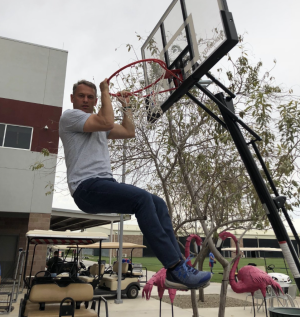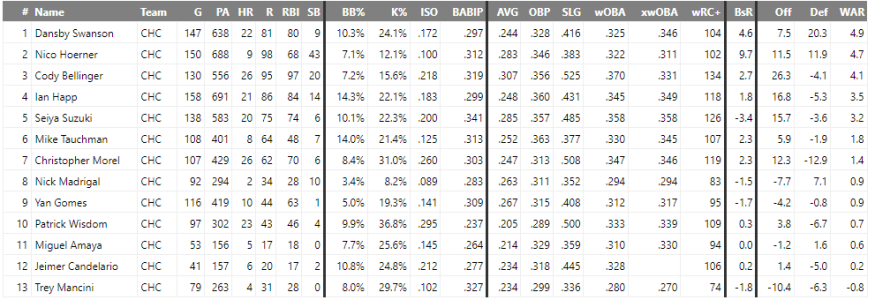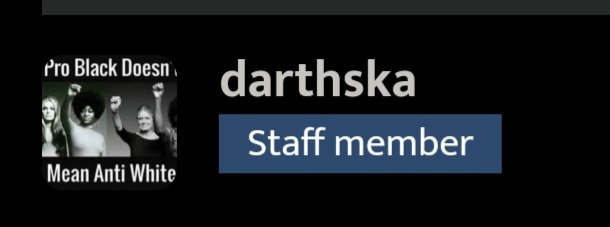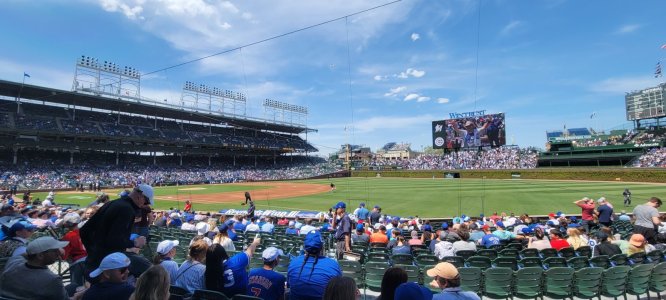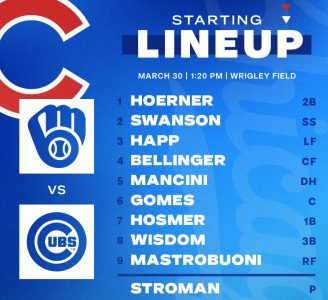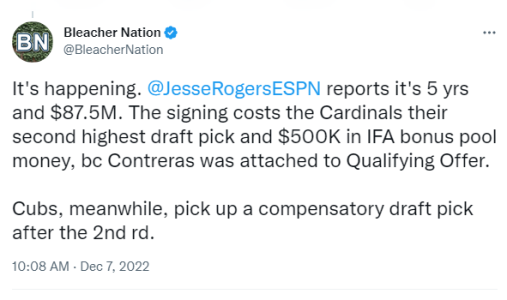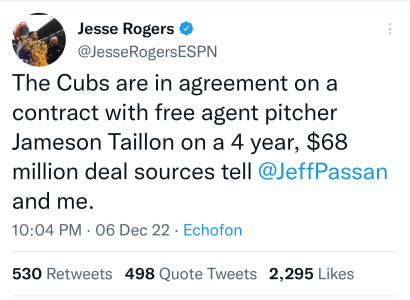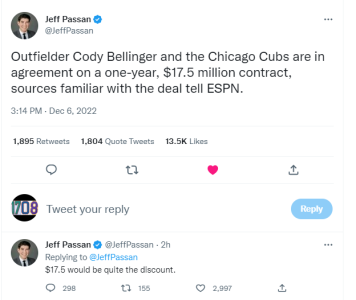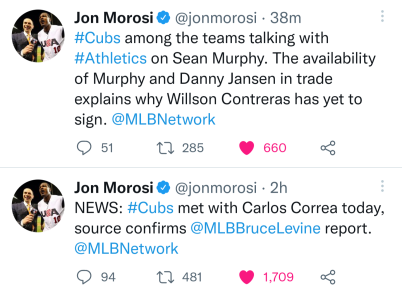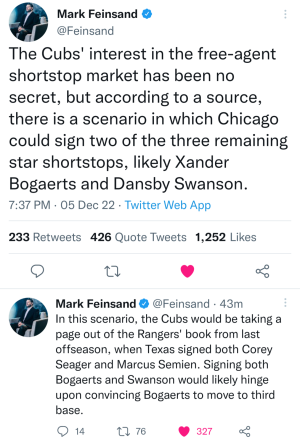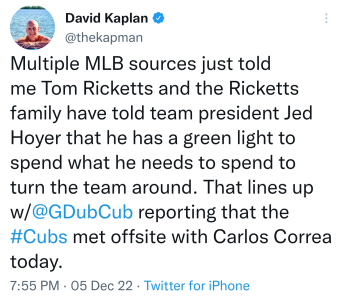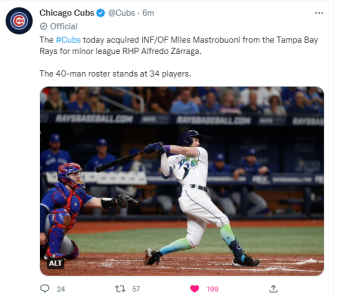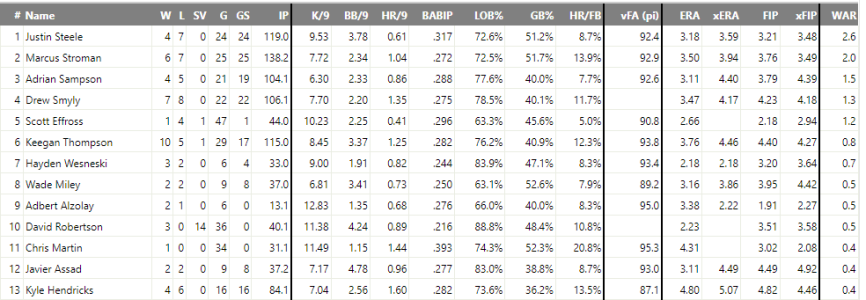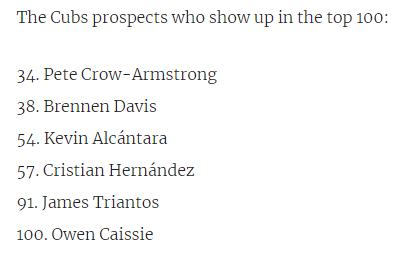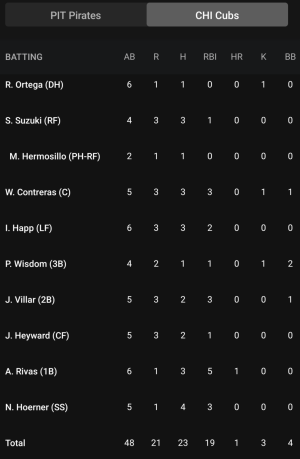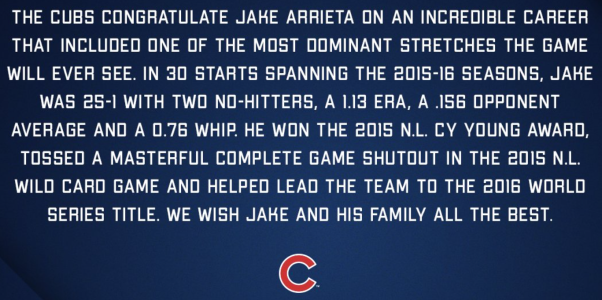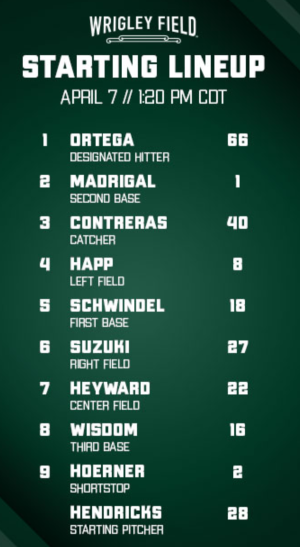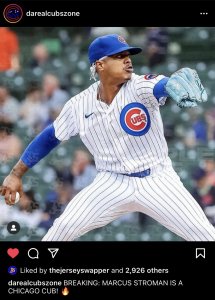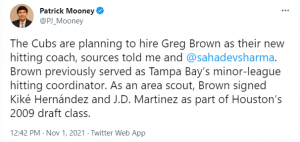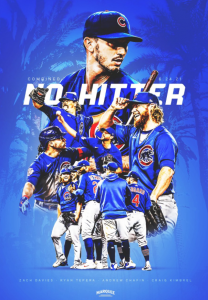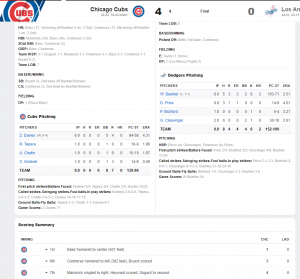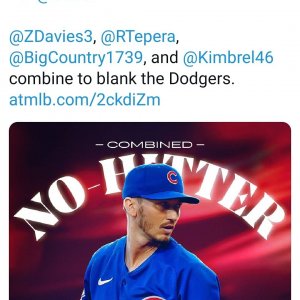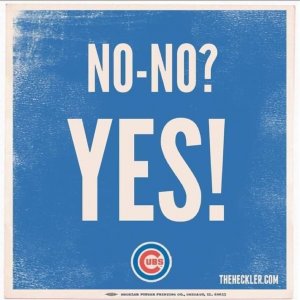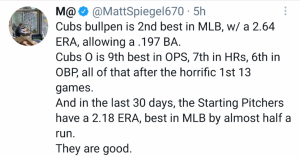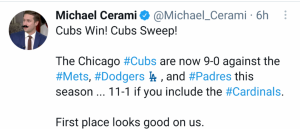Kev, you like the pick then? I'm a little nervous about everyone saying he is without a true position. Can't catch full time, a little round for the outfield, and 1b is locked up by Rizzo, so where do we put him?
He kinda fits the DH profile more than anything.
Anyway, Neil Ramirez so far this year:
15 gms
13.1 Inn
6 hits
1 run (on a solo homer by Gordon Beckham)
4 walks
21 K's
.75 WHIP
.68 ERA

He kinda fits the DH profile more than anything.
Anyway, Neil Ramirez so far this year:
15 gms
13.1 Inn
6 hits
1 run (on a solo homer by Gordon Beckham)
4 walks
21 K's
.75 WHIP
.68 ERA


 : Mark Zagunis, C, Virginia Tech - A righty batter who has come on offensively of late, Zagunis is a junior whom MLB.com describes thusly: “The ACC standout has shown a propensity for putting the ball in play and hitting for average, albeit from a slightly unusual setup. He’s shown some extra-base pop in the past, though not as much in 2014. He runs extremely well for a catcher and has shown that his athleticism plays well in the outfield. His arm is average but on target, and his other skills say he could stay behind the plate full-time. The team that believes he can continue to hit might think he has the chance to be an everyday backstop in the future, and it will draft him accordingly. At the very least, Zagunis’ versatility provides a team with options if catching doesn’t work out.” I’m assuming the Cubs are thinking Zagunis can stick at catcher, given where they’re selecting him. The bat looks good, but not overwhelmingly so.
: Mark Zagunis, C, Virginia Tech - A righty batter who has come on offensively of late, Zagunis is a junior whom MLB.com describes thusly: “The ACC standout has shown a propensity for putting the ball in play and hitting for average, albeit from a slightly unusual setup. He’s shown some extra-base pop in the past, though not as much in 2014. He runs extremely well for a catcher and has shown that his athleticism plays well in the outfield. His arm is average but on target, and his other skills say he could stay behind the plate full-time. The team that believes he can continue to hit might think he has the chance to be an everyday backstop in the future, and it will draft him accordingly. At the very least, Zagunis’ versatility provides a team with options if catching doesn’t work out.” I’m assuming the Cubs are thinking Zagunis can stick at catcher, given where they’re selecting him. The bat looks good, but not overwhelmingly so.
 smokin
smokin
 .....
.....

